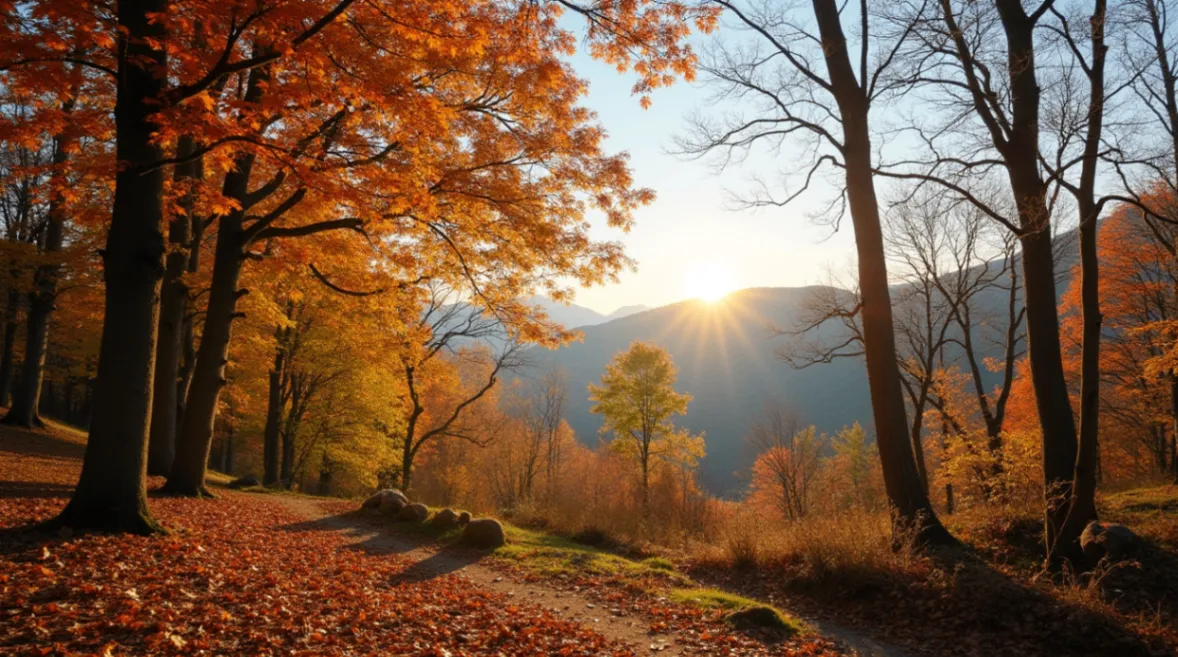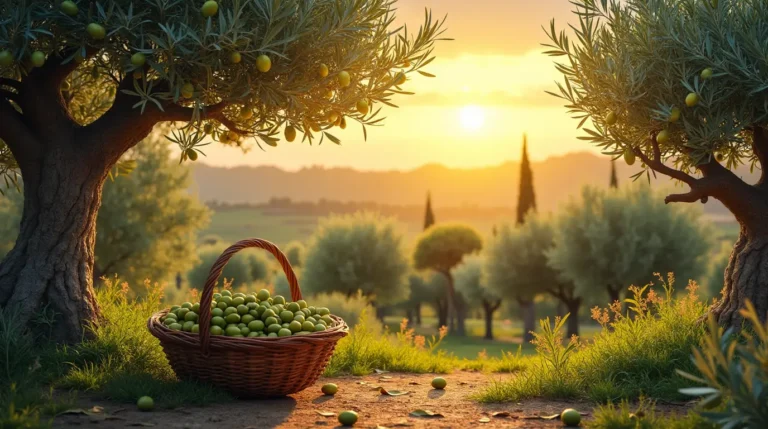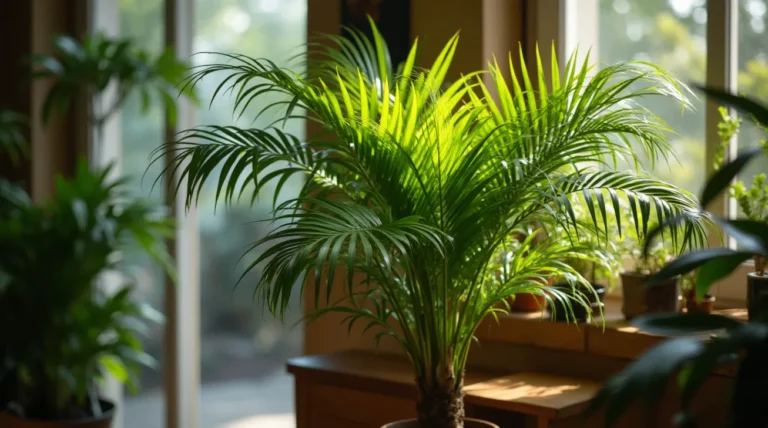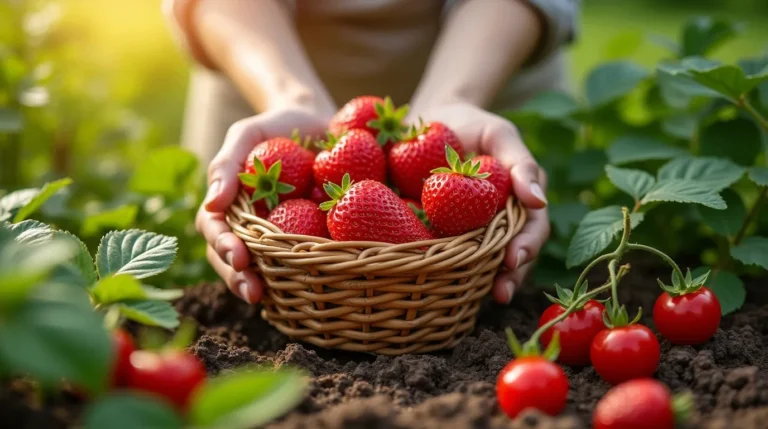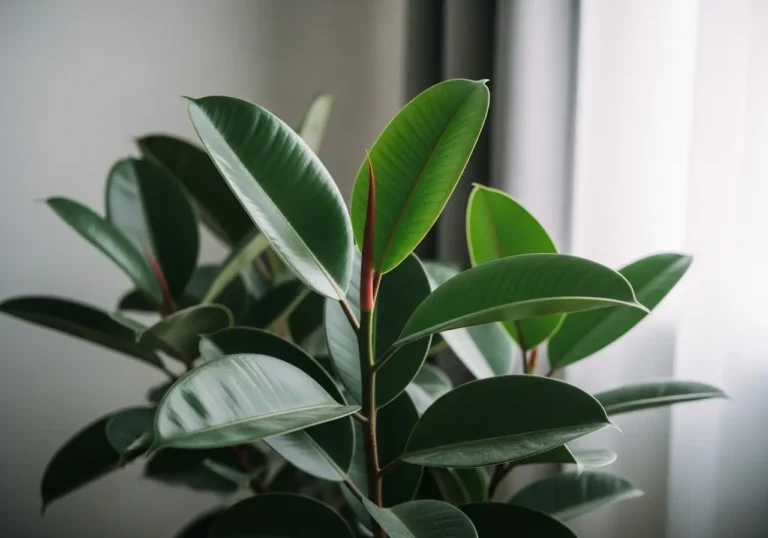Deciduous Trees: How To Care For Them Year-Round
Deciduous trees add beauty and shade to our outdoor spaces. To keep them healthy, we need to care for them all year. This includes pruning, watering, and fertilizing.

Following a guide on deciduous tree care helps keep them looking great. We’ll cover seasonal tasks and common diseases. With the right care, your trees will thrive for years.
Key Takeaways
- Deciduous trees need regular care and maintenance to stay healthy.
- Pruning, watering, and fertilizing are key for tree care.
- Seasonal tasks, like spring and fall cleanup, are important for tree health.
- Common diseases can affect trees, but proper care can prevent and treat them.
- Proper care and maintenance can extend your trees’ life.
- With care, deciduous trees can add beauty, shade, and character to your landscape.
Understanding Deciduous Trees
Deciduous trees are key to many ecosystems. They have special traits that make them stand out. Knowing their life cycle and how seasons affect them is crucial for their care.
Deciduous trees go through big changes each year. In spring, they grow new leaves and start making flowers and fruits. Summer brings full bloom and green leaves. Fall brings color changes and leaf drop, and winter is a time of rest.
Characteristics of Deciduous Trees
Deciduous trees are known for shedding leaves every year and having broad leaves. They can be found worldwide and play a big role in ecosystems.

Types of Deciduous Trees
There are many types of deciduous trees, like oak, maple, and elm. Each has its own needs and traits. Knowing what your tree needs is key to keeping it healthy and long-lived.
By understanding deciduous trees, you can give them the best care. This way, you can enjoy their beauty for many years.
| Tree Type | Characteristics | Care Requirements |
|---|---|---|
| Oak | Broad leaves, sturdy branches | Regular pruning, fertilization |
| Maple | Bright fall colors, shallow roots | Regular watering, mulching |
| Elm | Narrow leaves, vase-shaped branches | Regular pruning, pest control |
Essential Tools for Deciduous Tree Care
When caring for deciduous trees, the right tree care tools are key. You’ll need pruning equipment like loppers, pruners, and saws. These tools help keep the tree’s shape and encourage healthy growth.
You’ll also need gardening supplies like fertilizers, mulch, and watering tools. These items give the tree the nutrients and care it needs to thrive.
Some essential tools for caring for deciduous trees include:
- Pruning saws for cutting thick branches
- Loppers for trimming smaller branches
- Pruners for precision cutting
- Fertilizers for promoting healthy growth
- Mulch for retaining moisture and suppressing weeds
Investing in the right tree care tools and gardening supplies ensures your trees get the best care. Choose high-quality tools made for your trees’ needs. If you’re unsure, ask a professional for advice.

With the right tools and supplies, you’ll become a skilled tree care professional. Your deciduous trees will appreciate the care you give them.
| Tool | Description | Importance |
|---|---|---|
| Pruning saw | Used for cutting thick branches | High |
| Loppers | Used for trimming smaller branches | Medium |
| Pruners | Used for precision cutting | High |
Spring Care Guidelines
As winter ends, it’s time to focus on spring tree care. This ensures your deciduous trees stay healthy and strong. You’ll need to check for damage and use the best fertilization methods.
Timing is key when it comes to pruning. Prune your deciduous trees in early spring. This helps them grow well and stay disease-free. Cutting off dead or damaged branches lets your tree focus on new growth.

Fertilization is also vital in spring. The right fertilizer gives your tree the nutrients it needs. Consider the soil type, tree species, and climate when fertilizing.
- Soil type and pH level
- Tree species and age
- Climate and weather conditions
By caring for your tree with pruning and fertilization, you’ll help it thrive. Always think about what your tree needs. If you’re unsure, get help from a tree care expert.
Location and Planting Requirements
Choosing the right spot for a tree is key to its health and growth. The soil must have the right pH and nutrients. The tree also needs the right sunlight and water.
When picking a spot for a tree, consider a few things:
- Soil type: Trees like different soils, so pick the right one.
- Sunlight: Most trees need sun to partial shade.
- Moisture: Trees need enough water to grow well.
After finding the perfect spot, it’s time to plant. Dig a hole that’s twice as wide and as deep as the root ball. Add compost or manure to the soil to make it better. Water the tree often, especially in its first year.

By following these tips, you can help your tree grow strong and healthy. Always check what your tree species needs for the best care.
| Tree Species | Soil Requirements | Sunlight Needs |
|---|---|---|
| Oak | Well-drained soil with a pH between 6.0 and 7.0 | Full sun to partial shade |
| Maple | Moist soil with a pH between 5.5 and 6.5 | Partial shade to full sun |
Summer Maintenance Tasks
Summer is a time when deciduous trees need extra care to grow well. They need watering, mulching, and pest control. It’s important to keep them moist and fed as they grow leaves.
Watering is key in summer. Trees need steady moisture, especially when it’s hot and dry. Deep watering once or twice a week is better than shallow watering often. This helps the roots grow strong and deep.
Mulching keeps the soil moist, stops weeds, and controls temperature. Use organic mulch like wood chips or bark, 2-3 inches thick. Keep it a few inches from the trunk. This method cuts down on watering and prevents soil erosion.
Effective Mulching and Watering Tips
- Apply mulch in the spring or summer when the soil is warm
- Water trees deeply but infrequently to encourage deep root growth
- Monitor soil moisture by inserting a finger into the soil up to the knuckle
By following these tips, your deciduous trees will stay healthy and strong. Keep an eye out for pests and diseases. Act fast if you see any problems.
Proper Watering Techniques
Tree watering is key for deciduous tree health and growth. Knowing how to water your trees right is vital. Soil moisture levels are crucial, as too much or too little water can harm your tree.
Methods like drip irrigation and soaker hoses are great. They water the roots directly, cutting down on evaporation and runoff. Think about your climate, soil, and tree size when choosing a method. Younger trees need more water, while older trees need less but deeper watering.
To find out when to water, check the soil moisture by feeling it or using a probe. If it’s dry, it’s time to water. Using drip irrigation keeps the soil moist, helping your tree grow well. Proper watering ensures your trees stay strong and healthy.
| Watering Method | Benefits |
|---|---|
| Drip Irrigation | Reduces evaporation and runoff, delivers water directly to roots |
| Soaker Hoses | Delivers water directly to roots, reduces evaporation and runoff |
Understanding and using the right watering techniques is essential for your trees. Keep an eye on soil moisture and adjust your watering schedule as needed. This makes tree watering a critical part of caring for your trees.
Fall Preparation Steps
As fall comes, it’s key to get your deciduous trees ready for winter. Good fall tree care keeps them healthy and strong. A big part of this is leaf management. Picking up leaves stops diseases and pests from spreading.
Pruning is also vital in the fall. It cuts out dead or damaged branches, helping your trees grow better. Plus, it lessens damage from snow and ice. Protecting the roots from cold and dry soil is crucial too. Mulch around the tree keeps the soil moist and warm.
- Water your trees regularly, but avoid overwatering, which can cause root rot and other problems.
- Apply a layer of fertilizer to promote healthy growth and development.
- Monitor your trees for signs of disease or pest infestation, and take action promptly if you notice any issues.
| Tree Care Task | Importance | Frequency |
|---|---|---|
| Leaf Management | High | Weekly |
| Pruning | Medium | Monthly |
| Root Protection | High | Seasonally |
By following these tips, you can keep your deciduous trees healthy through the fall. Always focus on fall tree care, including leaf management and pruning. This way, your trees will thrive for many years.
Winter Protection Strategies
As winter comes, it’s key to think about winter tree care to shield your deciduous trees. Cold, wind, and snow can harm them. So, using tree wrapping to protect the trunk is a good idea.
Choosing the right winter tree care depends on the tree’s type, age, and health. Younger trees need more care than older ones. Here are some important things to think about for winter protection strategies:
- Check the tree’s health and age to pick the best protection
- Think about the tree’s type and what it needs
- Pick a tree wrapping material that lets air through and won’t harm the bark
There are other ways to care for your trees in winter too. You can use anti-desiccant sprays to keep moisture in. Snow fencing can also help by blocking wind. These protection strategies can keep your deciduous trees healthy and strong all winter.
By using good winter protection strategies, you can protect your deciduous trees from winter’s harsh weather. Pick the best method for your trees and get help if you’re not sure what to do.
| Tree Type | Age | Protection Method |
|---|---|---|
| Young Trees | 1-2 years | Tree wrapping and anti-desiccant sprays |
| Established Trees | 5-10 years | Tree wrapping and snow fencing |
| Mature Trees | 10+ years | Anti-desiccant sprays and regular monitoring |
Common Diseases and Treatment
Deciduous trees often face diseases like fungal infections and bacterial diseases. It’s key to spot these diseases early for good disease treatment and prevention methods. Common issues include root rot, leaf spot, and canker diseases.
To spot tree diseases, watch for signs like color changes, leaf loss, or odd growth. Prevention methods include watering right, fertilizing, and pruning well. Regular checks and care can stop diseases from spreading.
Choosing the right disease treatment is crucial. Here’s a table showing common tree diseases and how to treat them:
| Disease | Treatment Option |
|---|---|
| Root Rot | Improve drainage, remove infected roots |
| Leaf Spot | Remove infected leaves, apply fungicides |
| Canker Diseases | Remove infected branches, apply bactericides |
Knowing about tree diseases and using good prevention methods and disease treatment can keep your deciduous trees healthy and long-lasting.
Pruning Your Deciduous Trees
Pruning is key for deciduous tree care. It keeps the tree’s shape, encourages growth, and removes dead or sick branches. Using the right pruning techniques is vital to avoid harming the tree.
When pruning, safety is a top priority. Wear gloves and safety glasses. Also, make sure the area around the tree is clear of debris.
Seasonal Timing
The best time to prune deciduous trees varies by tree type and growth cycle. Generally, prune in the dormant season. This is when the tree is less stressed.
Safety Considerations
Pruning can be a hazardous task, especially when working at heights. Always follow safety guidelines and consider hiring a professional if you’re unsure about any aspect of the process.
Soil Management and Fertilization
Proper soil management is key for deciduous trees’ health and growth. It means keeping the soil’s pH and nutrient levels right. Trees need a mix of nutrients to grow well, and fertilization is vital for this. Knowing about tree nutrition helps create a fertile spot for your trees to grow.
For soil management, testing the soil’s pH is crucial. Most deciduous trees like a slightly acidic to neutral soil pH, between 6.0 and 7.0. You can change the pH by adding lime or sulfur. Also, adding compost or manure can boost the soil’s nutrient and structure.
To give your trees the best tree nutrition, use a balanced fertilizer with nitrogen, phosphorus, and potassium. The best time to fertilize is in the spring or early summer. Organic fertilizers like fish emulsion or bone meal are good too. They release nutrients slowly and help soil microbes.
- Choose a fertilizer made for deciduous trees
- Stick to the recommended amounts to avoid over-fertilizing
- Water the trees well after fertilizing to prevent root damage
By following these tips and focusing on soil management and fertilization, you can give your deciduous trees the nutrients they need. This will help them thrive and make your landscape look great.
Signs of Tree Stress and Solutions
Deciduous trees can face tree stress from diseases, pests, and the environment. Spotting visual indicators of stress is key to helping them. Look for yellow leaves, early leaf drop, or bark changes.
If a tree is stressed, quick action is needed. This might mean cutting off sick branches, changing how often you water, or using fertilizers. Knowing when to call a pro is also important.
Recognizing the Need for Professional Help
Some tree care is easy for homeowners, but not all. If you see big tree stress signs or are unsure what to do, get help from an arborist. They can check the tree and suggest the right fixes.
Emergency Care Steps
- Check the tree to find out why it’s stressed.
- Trim off any sick or damaged branches.
- Change your watering and fertilizing routine if needed.
Knowing the signs of tree stress and when to act fast can help your trees do well, even when things get tough.
Long-Term Growth Management
Effective long-term management is key for keeping deciduous trees healthy. It means creating a plan with pruning strategies for better tree growth. This way, tree owners can make sure their trees stay healthy for many years.
Here are some important things to think about:
- Regular pruning to keep the tree’s shape and size right
- Thinning and reduction pruning for healthy growth
- Watching the tree’s growth to change the plan if needed
A good long-term management plan lets tree owners enjoy their trees for a long time. By using pruning strategies and watching tree growth, trees stay healthy and strong.
By following these tips and thinking about their trees’ needs, tree owners can make a great long-term management plan. This plan helps trees grow well and live a long life.
| Pruning Strategy | Purpose |
|---|---|
| Thinning | To reduce the density of the tree’s canopy |
| Reduction | To decrease the size of the tree |
Conclusion: Nurturing Your Deciduous Trees for Generations
Caring for your deciduous trees is a journey that needs your dedication. By following the tree care tips in this guide, you can keep your trees healthy for many years. This ensures they will be around for a long time.
Deciduous trees add beauty and value to your property. They provide shade and make your outdoor spaces more enjoyable. Taking good care of them means you’re also giving a gift to future generations.
Always watch over your trees and act quickly if they need help. With the right care, your deciduous trees will flourish. They will bring joy and wonder to everyone who sees them.
FAQ
What are the defining characteristics of deciduous trees?
Deciduous trees lose their leaves every year, usually in fall. They adapt to seasonal changes. They grow new leaves in spring and rest in winter.
What are some common types of deciduous trees?
Common deciduous trees include oak, maple, birch, ash, and elm. These trees are found worldwide. They change with the seasons.
How do deciduous trees adapt to the changing seasons?
Deciduous trees have a yearly cycle. In spring, they grow new leaves and flowers. Summer brings full foliage and photosynthesis.
In fall, they shed leaves for less daylight and cold. Winter is their dormant time.
What tools are essential for caring for deciduous trees?
You’ll need pruning shears, loppers, saws, a tree wrap, and a soil testing kit. These tools help with pruning, protecting, and soil checks.
How should I prune my deciduous trees?
Prune in late winter or early spring, before new growth. Use sharp tools and make cuts outside the branch collar. This keeps the tree healthy.
How can I ensure my deciduous trees receive adequate water and nutrients?
Keep soil moist and nutrient-rich. Water deeply and often in summer. Fertilize with a balanced, slow-release fertilizer in spring.
What are some common diseases and pests that affect deciduous trees?
Deciduous trees face diseases and pests like fungal infections and insects. Regular checks and early treatment are crucial.
How can I protect my deciduous trees during the winter?
Winter protection is key. Wrap trunks, use anti-desiccant sprays, and mulch roots. This prevents cold, wind, and snow damage.
When is the best time to plant a new deciduous tree?
Plant in fall or early spring when dormant. This helps roots grow before summer growth.
How can I tell if my deciduous tree is stressed, and what should I do?
Look for yellow leaves, wilting, and dieback. If stressed, water more, check soil, and seek help if needed.

